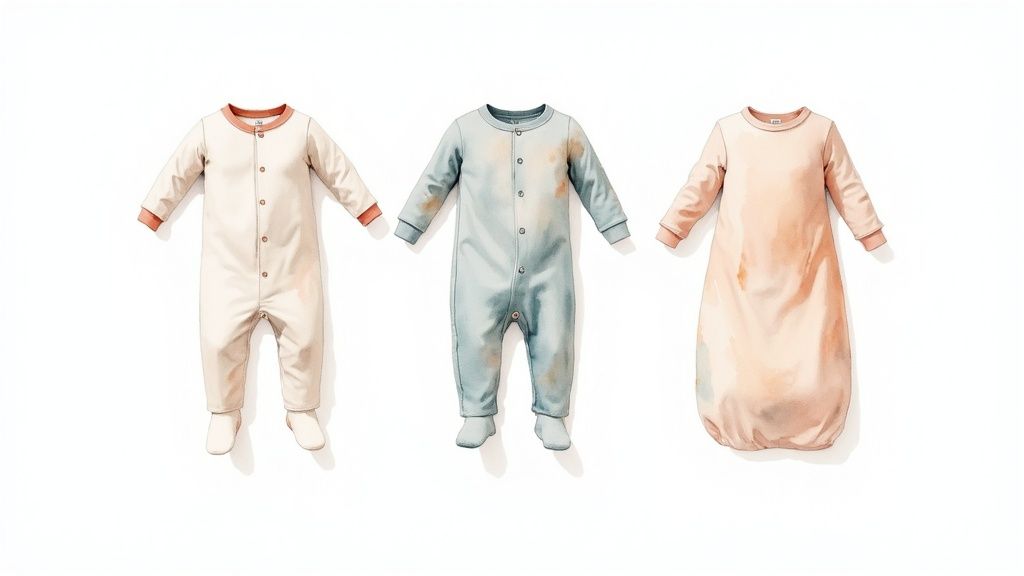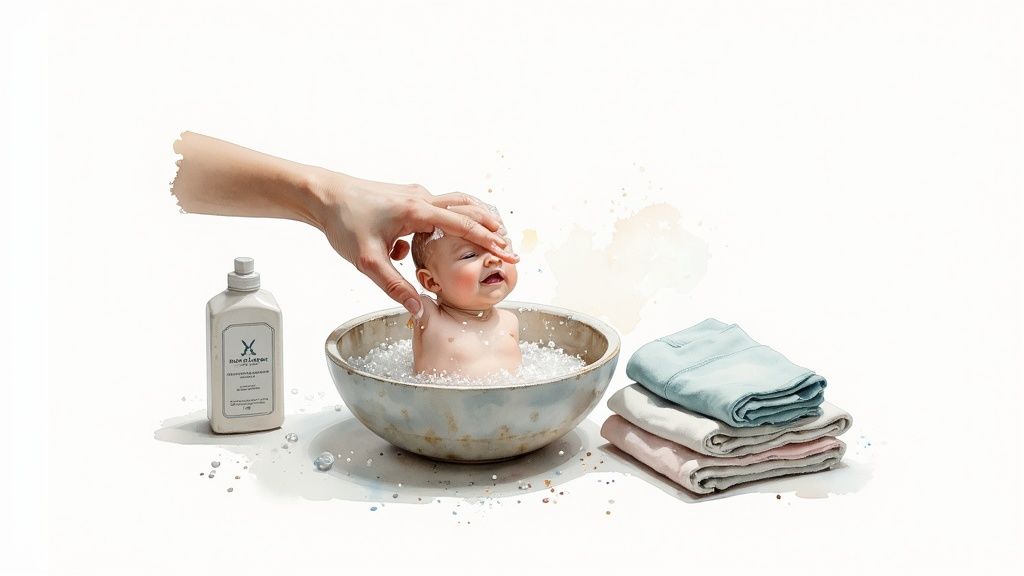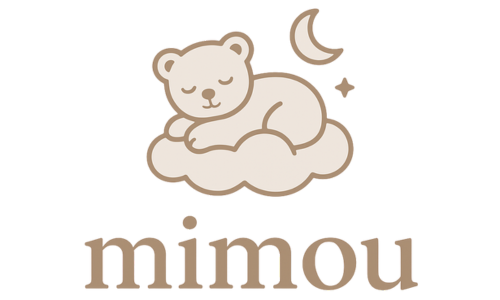Bringing a new baby home is one of life’s most incredible moments, but staring at racks of tiny clothes can feel overwhelming. I remember feeling lost among so many adorable options—only to discover you really need a small, carefully chosen collection of soft, comfy basics.
This clothes for newborns checklist focuses on practicality and comfort—so your baby stays cozy and you avoid an overflowing laundry basket. With a few versatile pieces you can mix and match, those endless outfit changes become a breeze.
Why Less Is More for a Newborn Wardrobe
It’s easy to be tempted by every cute print in sight. But babies grow at lightning speed—often outgrowing a size in just a couple of weeks. Seasoned parents know that a capsule wardrobe of essentials saves time, money, and laundry loads.
For example, my nephew went from fitting into size Newborn to 0–3 Months in just ten days. By sticking to a curated set of high-quality pieces, you’ll have just enough for a few days’ wear and still feel prepared for surprise growth spurts. Think soft cotton bodysuits and easy-change sleepers you truly love.

Building Your Starter Kit
Aim for about two days’ worth of outfits to handle spit-ups, diaper blowouts, and laundry days without stress. A simple starter kit of 5–7 bodysuits and 4–6 sleepers usually does the trick. This gives you a small buffer for messes and lets you discover which styles work best for you and your baby.
Expert Tip: Keep an extra bodysuit by the changing table for those surprise 3 a.m. blowouts. It’s been a lifesaver in my house!
To explore soft basics you’ll rely on daily, shop our collection of baby-friendly basics.
Quick-View Newborn Clothing Essentials (0–3 Months)
| Clothing Item | Recommended Quantity | Key Features |
|---|---|---|
| Bodysuits (Onesies) | 5–7 | Soft, breathable fabric; snap closures for easy diaper access. |
| Sleepers (Sleepsuits) | 4–6 | Footed for warmth; two-way zipper for fast changes. |
| Pants/Leggings | 3–4 pairs | Stretchy and comfy for layering over bodysuits. |
| Socks or Booties | 4–6 pairs | Designed to stay on; keep tiny feet warm. |
| Hats/Beanies | 2–3 | Soft, fitted hats to help regulate temperature. |
| Swaddles | 2–3 | Secure swaddle sacks or zip options for easy swaddling. |
Want a complete list of newborn necessities? Check out our full newborn baby essentials list for feeding, nursery gear, and more.
What Are All These Different Types of Baby Clothes?
Navigating baby clothes feels like learning a new language. But once you know what each piece is for, shopping becomes a confident, stress-free experience. Your newborn’s wardrobe is a tiny toolkit: each item plays a role in comfort, warmth, or making diaper changes quick and easy.
Bodysuits: The Workhorse of Baby’s Wardrobe
Often called onesies, bodysuits are the MVPs of a newborn’s closet. Their snap closures at the crotch keep the fabric from riding up and make diaper changes simple. They work alone on warm days or as a base layer under sleepers and pants.
Styles to consider:
- Lap-Shoulder Bodysuits: Overlapping shoulders let you pull the suit down over your baby after a messy diaper moment, avoiding any tugging over the head.
- Side-Snap Bodysuits (Kimono Style): Perfect for fragile newborn necks and umbilical cords—no need to pull anything over the head.
Real-Life Tip: I kept a small laundry basket just for bodysuits. On busy days, I could toss in everything and still stay on top of washing.
Sleepers: The Go-To Cozy Outfit
Sleepers (also called sleepsuits or footie pajamas) are all-in-one outfits that keep baby warm without separate socks or pants. A two-way zipper is a nighttime game-changer, letting you unzip from the bottom to change diapers without exposing little arms and chests.

Key features to look for:
- Footed vs. Footless: Footed sleepers keep toes cozy and eliminate lost socks; footless give more room to grow.
- Zippers vs. Snaps: Zippers are faster, especially at 2 a.m. Snaps take patience but can feel more secure.
- Fold-Over Mittens: Built-in cuffs prevent newborns from scratching their faces during sleep.
For more snuggly styles, browse our sleepwear essentials designed for comfort.
Gowns: Super-Fast Nighttime Changes
Sleep gowns are long, soft shirts with an open, elastic bottom—no zippers or snaps to fumble in the dark. Lift up, change, and pull down. It’s the fastest way to handle midnight diaper duty and get everyone back to sleep.
They’re not ideal for car seats, but at home, they’re a lifesaver. Keep 2–3 in your rotation alongside sleepers.
Choosing the Best Fabrics for Delicate Skin
A newborn’s skin is ultra-sensitive, much thinner than an adult’s. The right fabrics help regulate body temperature, reduce irritation, and support healthy skin. Think of wrapping your baby in a gentle hug all day long.
Why Natural Fibers Are a Newborn’s Best Friend
Natural fibers work with your baby’s skin, not against it. They breathe, wick moisture, and are free from harsh chemicals.
- Organic Cotton: Grown without pesticides, it’s soft, durable, and highly breathable—ideal for everyday wear.
- Bamboo Rayon: Silky-smooth, hypoallergenic, and temperature-regulating, it keeps baby cool or warm as needed.
- Linen Blends: Lightweight and airy—perfect for warm climates and sunny days.
Fabrics to Approach with Caution
Synthetic materials like polyester or nylon can trap heat and moisture, potentially causing rashes or discomfort. Always check for blends and aim for 100% natural fibers when you can.
Need help figuring out if baby is too warm? Our guide on how to tell if your baby is too hot offers simple checks.
Comparing Common Newborn Fabric Types
| Fabric Type | Pros | Cons |
|---|---|---|
| Organic Cotton | Hypoallergenic, breathable, chemical-free | Can be pricier; may take longer to dry |
| Bamboo Rayon | Silky, antibacterial, temperature-regulating | More delicate; may need gentle washing cycles |
| Polyester/Nylon | Durable, stain-resistant, budget-friendly | Not breathable; can trap heat and irritate skin |
| Fleece | Warm, lightweight outer layer | Synthetic; best for outerwear, not next-to-skin |
How Many Clothes and Which Sizes to Buy
Seeing rows of Newborn, 0–3 Months, and even Preemie tags can be confusing. The key is balance: have a small stash of Newborn items (just in case) and focus your energy on the 0–3 Months size, which fits most babies for longer.
Cracking the Size Code
- Newborn (NB): Fits 5–8 lbs. Grab 3–4 bodysuits and 3–4 sleepers for your “just-in-case” drawer.
- 0–3 Months: Fits 8–12.5 lbs. This is where you’ll see the most wear—stock up here.
Parent Tip: If loved ones gift a lot of NB gear you won’t use, keep the tags on a few pieces so they can be exchanged easily.
Your Seasonal Shopping Strategy
A baby born in January needs different clothes than one arriving in July. Adjust fabrics and layers to the season for comfort and safety.

Winter and Fall Babies
Layers are your best friend:
- Essentials: Long-sleeve bodysuits, footed sleepers in fleece or French terry, soft sweaters.
- Outerwear: Bunting snowsuits or thick jackets for outings.
- Fabric Focus: Organic cotton fleece and snug knits.
Spring and Summer Babies
Light and airy is the name of the game:
- Essentials: Short-sleeve bodysuits, lightweight rompers, sun hats.
- Fabric Focus: Organic cotton, bamboo rayon, soft linen blends.
To stay on trend and find the best quality pieces, learn more about baby apparel market trends and forecasts.
Washing and Caring for Newborn Clothes

There’s nothing sweeter than a stack of fresh baby clothes. With a few easy laundry tweaks, you’ll keep every piece soft, clean, and gentle on new skin.
- Pre-Wash Everything: New clothes often carry dust and residues. A gentle wash ensures the first thing touching baby’s skin is perfectly clean.
- Choose a Mild Detergent: Hypoallergenic, fragrance-free, dye-free formulas are best. Many “free and clear” options work for baby and the whole family.
- Parent Hack: Use a mesh laundry bag for tiny items like socks and mittens so they don’t get lost.
- Gentle Wash and Dry: Select the delicate cycle with cold water. Treat stains promptly by rinsing with cold water and gently rubbing a bit of detergent. Tumble dry on low or air dry when possible to keep fabrics soft and shrink-free.
Following these steps preserves the softness and longevity of your clothes for newborns checklist.
Still Have Questions About Baby's First Wardrobe?
You’re not alone in wanting every detail just right. Here are a few common questions answered:
How Should I Dress My Newborn for Safe Sleep?
Keep it simple and snug:
- Choose a fitted one-piece sleeper in 100% cotton.
- Maintain room temperature between 68°F and 72°F.
- Skip loose blankets—opt for wearable blankets or swaddle sacks.
Do I Really Need to Pre-Wash New Clothes?
Yes! Pre-washing removes chemicals, dyes, and dust. Use a gentle detergent, wash on cold, and tumble dry low or air dry.
Are Hand-Me-Downs Safe to Use?
Absolutely. Inspect each piece for loose threads or damaged snaps, then wash them like new clothes before first wear. Well-loved cotton often becomes even softer after a few washes.
What’s the Best Way to Layer for Changing Temperatures?
Treat layers like an onion:
- Start with a lightweight bodysuit.
- Add footed pants or a sweater for cooler weather.
- Check baby’s chest or neck—if it’s sweaty, remove a layer.
Trust your instincts—you’ll soon know your baby’s comfort cues like a pro.
Mimou Babywear brings you gentle, breathable essentials that fit perfectly into your newborn checklist. Shop our collection of baby-friendly basics and dress your little one in pure comfort.
Article created using Outrank





